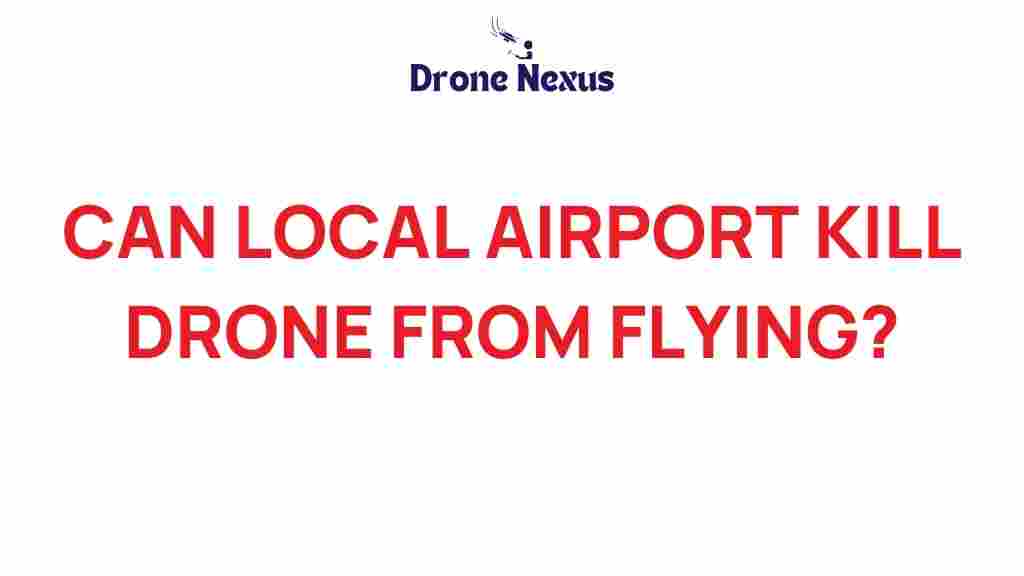Can Local Airports Effectively Ground Drones?
As drone technology advances, the interaction between drones and local airports has become a topic of significant importance. With the increasing number of drones in the airspace, local airports are tasked with ensuring safety and compliance. But can local airports effectively ground drones? This article explores the challenges and solutions surrounding this pressing issue, delving into how local airports can manage drone activities while maintaining safety and efficiency.
The Growing Drone Dilemma
The proliferation of drones has transformed various industries, from agriculture to photography. However, this growth has also raised concerns about airspace safety, particularly near local airports. Drones can pose serious risks, including:
- Collision Risks: Drones flying near airports can interfere with manned aircraft, leading to dangerous situations.
- Regulatory Challenges: Many drone operators may not be aware of the regulations governing airspace around local airports.
- Privacy Concerns: Drones can inadvertently invade the privacy of individuals living near airports.
Understanding how local airports can effectively ground drones is crucial for mitigating these risks and ensuring safe operations in shared airspace.
Current Regulations and Policies
Local airports operate under strict regulations set by aviation authorities, such as the Federal Aviation Administration (FAA) in the United States. These regulations aim to create a safe airspace for all users. Key regulations affecting local airports and drone operations include:
- FAA Part 107: This outlines the rules for commercial drone operations, including restrictions on flying near airports.
- Temporary Flight Restrictions (TFRs): Local airports can issue TFRs to restrict drone flights during specific events or emergencies.
- Local Ordinances: Many cities and counties have enacted laws that further regulate drone use within their jurisdictions.
Awareness of these regulations is critical for drone operators and local airport authorities alike. A collaborative approach can lead to a safer airspace for everyone.
Step-by-Step Process to Manage Drone Operations at Local Airports
Local airports can take several proactive steps to effectively ground drones and maintain safety in their airspace. Here’s a structured approach:
1. Establish Clear Communication
Local airports should have clear communication channels with drone operators. This can include:
- Setting up dedicated hotlines or online platforms for reporting drone sightings.
- Providing educational resources about safe drone flying practices.
2. Implement Drone Detection Systems
Investing in drone detection technology can significantly improve an airport’s ability to monitor drone activity. These systems can:
- Track unauthorized drones entering restricted airspace.
- Provide real-time alerts to airport management and local law enforcement.
3. Train Airport Staff
Training airport personnel on drone management and safety protocols is essential. Staff should be equipped to:
- Identify potential drone threats.
- Respond appropriately to drone sightings.
4. Collaborate with Local Law Enforcement
Building partnerships with local law enforcement agencies can enhance enforcement capabilities. This collaboration can include:
- Joint training exercises to prepare for drone incidents.
- Coordinated responses to unauthorized drone activities.
5. Promote Community Awareness
Local airports should engage with their communities to raise awareness about drone safety. Initiatives could include:
- Hosting community workshops on drone regulations.
- Creating informational flyers or brochures about drone flying laws.
Troubleshooting Drone Incidents at Local Airports
Despite proactive measures, local airports may still encounter drone incidents. Here are some troubleshooting tips:
1. Assess the Situation
Upon sighting a drone, airport staff should quickly assess the situation to determine:
- The drone’s altitude and distance from the runway.
- Whether it poses an immediate threat to flight operations.
2. Coordinate with Air Traffic Control
Effective communication with air traffic control is vital. Operators should:
- Notify ATC of any drone sightings.
- Follow ATC directives regarding flight operations during a drone incident.
3. Implement Safety Protocols
Local airports should have established safety protocols for drone incidents. This might include:
- Temporarily halting flight operations if necessary.
- Redirecting incoming flights to alternate airports.
4. Document the Incident
Thorough documentation of drone incidents is crucial for future reference. Airports should:
- Record details of the sighting, including time, location, and drone characteristics.
- Compile reports to analyze trends and improve safety measures.
Technological Solutions for Drone Management
Advancements in technology offer promising solutions for local airports to manage drone activities effectively. Some innovative technologies include:
- Geofencing: This technology creates virtual boundaries that prevent drones from entering restricted airspace.
- Drone Jamming Systems: These systems can disrupt unauthorized drone signals, forcing them to land safely.
- Surveillance Drones: Local airports can deploy drones to monitor other drones in real-time, providing valuable data for response teams.
Case Studies: Local Airports and Drone Management
Several local airports have successfully implemented strategies to manage drone activities. Let’s look at a few examples:
1. Los Angeles International Airport (LAX)
LAX has taken a proactive approach by installing drone detection systems that alert authorities to unauthorized drone activity. The airport has also collaborated with local law enforcement to enhance response capabilities.
2. Newark Liberty International Airport
Newark has implemented community outreach programs to educate drone operators about local regulations. By fostering a culture of compliance, they have significantly reduced unauthorized drone flights.
Conclusion
As drone technology continues to evolve, local airports must adapt to effectively manage drone activities. By establishing clear communication, investing in detection systems, training staff, collaborating with law enforcement, and promoting community awareness, local airports can create a safer airspace for all users. With the right strategies in place, local airports can not only mitigate the risks associated with drones but also embrace the opportunities that drone technology presents.
For more information on drone regulations and safety practices, you can visit the FAA website. Additionally, if you’re interested in learning more about how local airports are managing drone operations, check out this in-depth article.
This article is in the category Safety and created by DroneNexus Team
